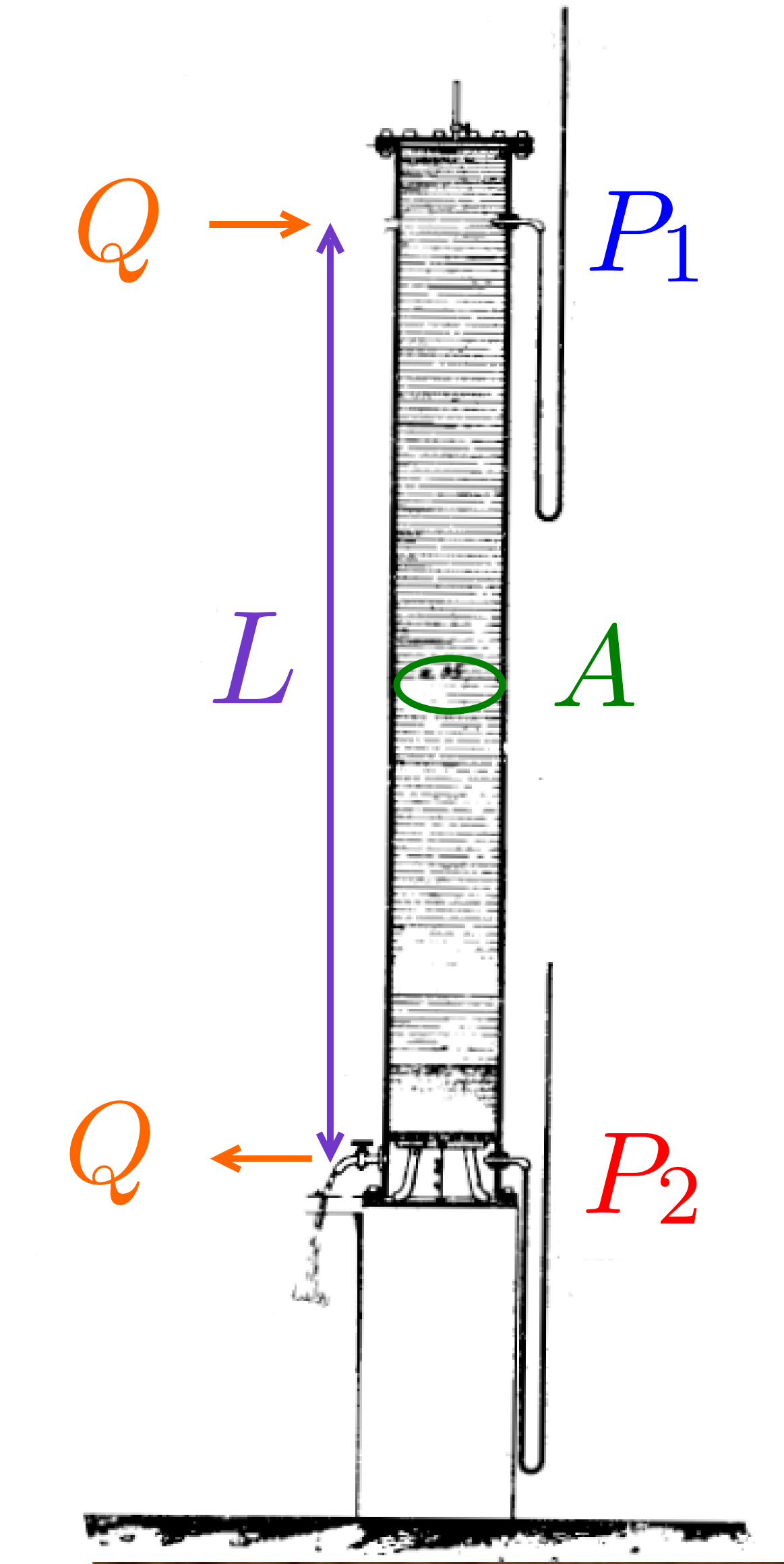Original formulation
From a series of experiments on steady flows of water through filter sands with different grain sizes, Henry Darcy established a relation between the flow $Q$ and the pressure drop $P_2-P_1$:
APMR
Acoustical Porous Material Recipes
From a series of experiments on steady flows of water through filter sands with different grain sizes, Henry Darcy established a relation between the flow $Q$ and the pressure drop $P_2-P_1$:
where $P_1$ and $P_2$ are pressure levels given as manometer heights respectively at the top and the bottom of the sand column. $L$ is the length of the sand column. $K$ is a proportional factor depending on the size and the compactness of the sand grains.

Note that Darcy's equation can be derived from Navier-Stokes equation (see for example the work by M. K. Hubbert presented at Darcy Centennial Hydrology Symposium [Hub56])
Keeping the magnitude of the flow $Q$ to a given value but modifying its direction (upward, downward or oblique...) one measures the same manometer difference $P_2-P_1$. Quoting M. K. Hubbert, this point can be rewritten as:
Darcy's law is invariant with respect to the direction of the flow in the earth's gravity field
This observation leads to a generalization of Darcy's law for flow in the 3D space which can be written in a derivative form and for an isotropic medium as:
where $\phi\vec{v}$ is the fluid flow, $\eta$ is the dynamic viscosity of the fluid, $\rho$ its mass density, $k_{0}$ is the static permeability of the material, $\vec{\nabla}p$ is the pressure gradient and $\vec{g}$ is the gravity vector (the term $-\rho\vec{g}$ is negligible compared to $\vec{\nabla}p$ only in the case of a horizontal flow).
This derivative form of Darcy's work raises the question of how should $\vec{v}$ and $p$ defined ? Should we considere tham as the velocity vector and the pressure at a particular point in the porous material or averaged values over a particular volume of the material ?
Obviously, $\vec{v}$ and $p$ should be consider as averaged value over a Representative Elementary Volume representing the smallest volume on which computation can be done to reproduce the behavior of the material.
Darcy's law has been extended to the dynamic regime introducing a complex and frequency dependent permeability $k(\omega)$. The homogenization theory justified this generalization a posteriori, see e.g. [Aur80], [ABC85], [Bou00])
\[ \phi \vec{v} = -\frac{k(\omega)}{\eta} \vec{\nabla} p \]where the gravity effect has been neglected.
In 1997, Lafarge & et al. [LLAT97] use a thermal equivalent to the dynamic Darcy's law to describe thermal effects in a porous medium. This work leads to the introduction of a new parameter: the static thermal permeability i.e. the low frequency limit of the thermal permeability.